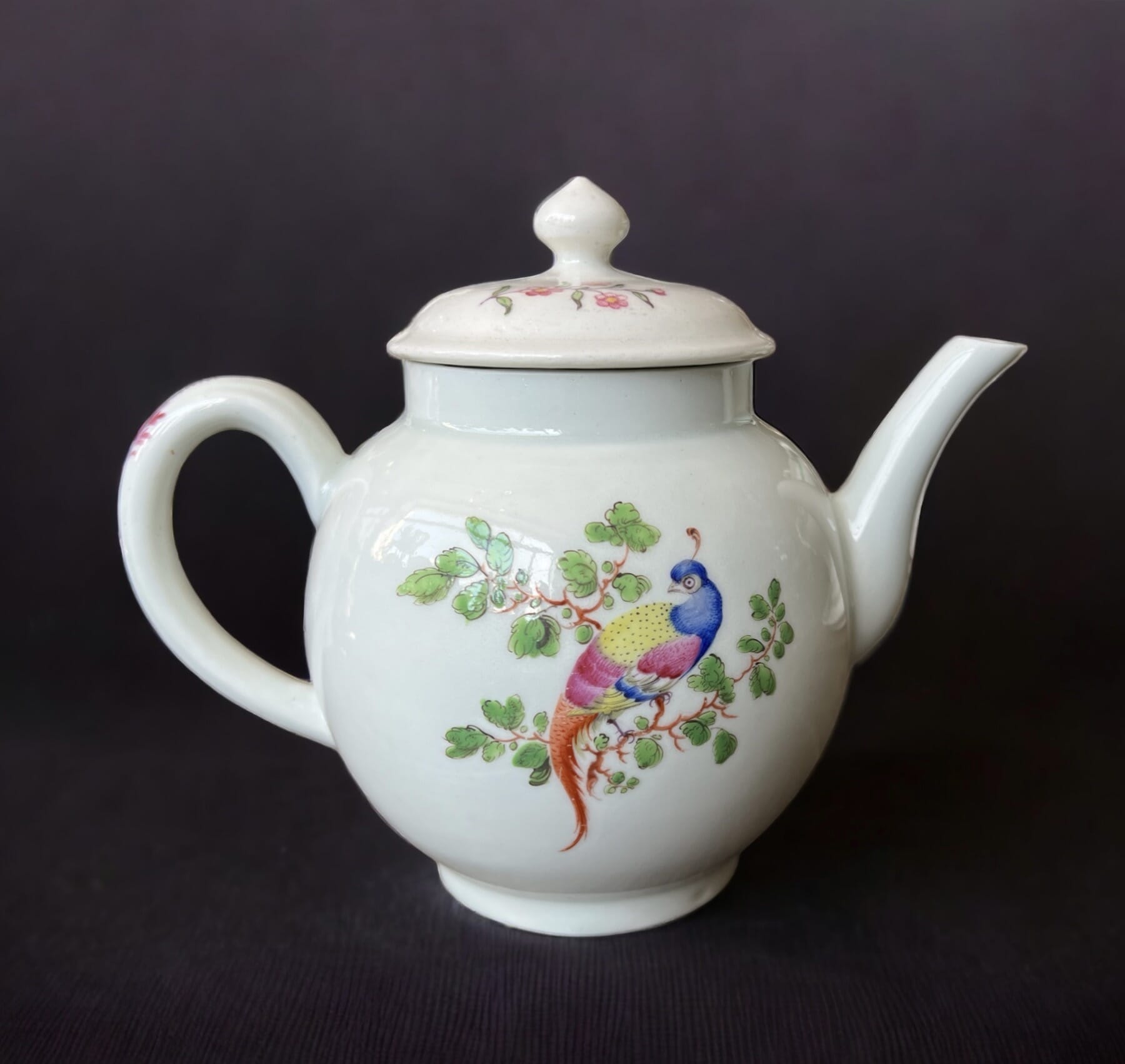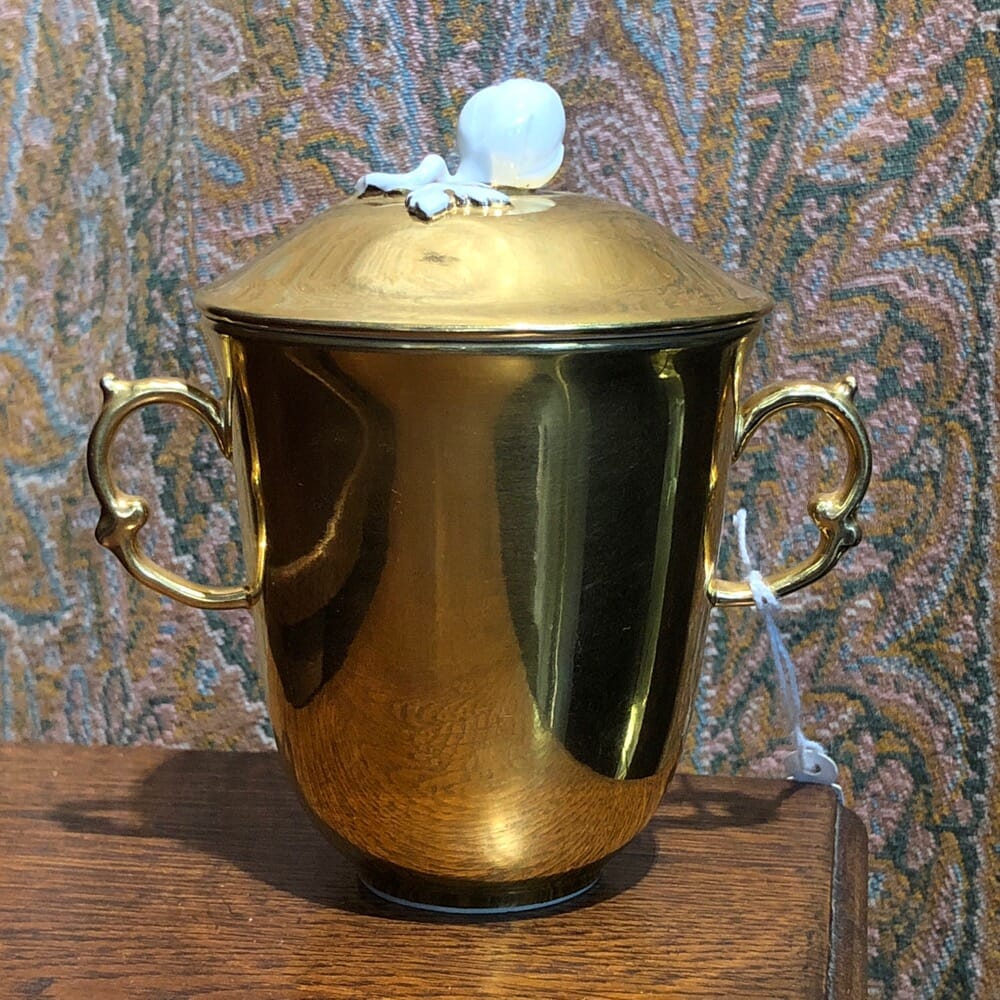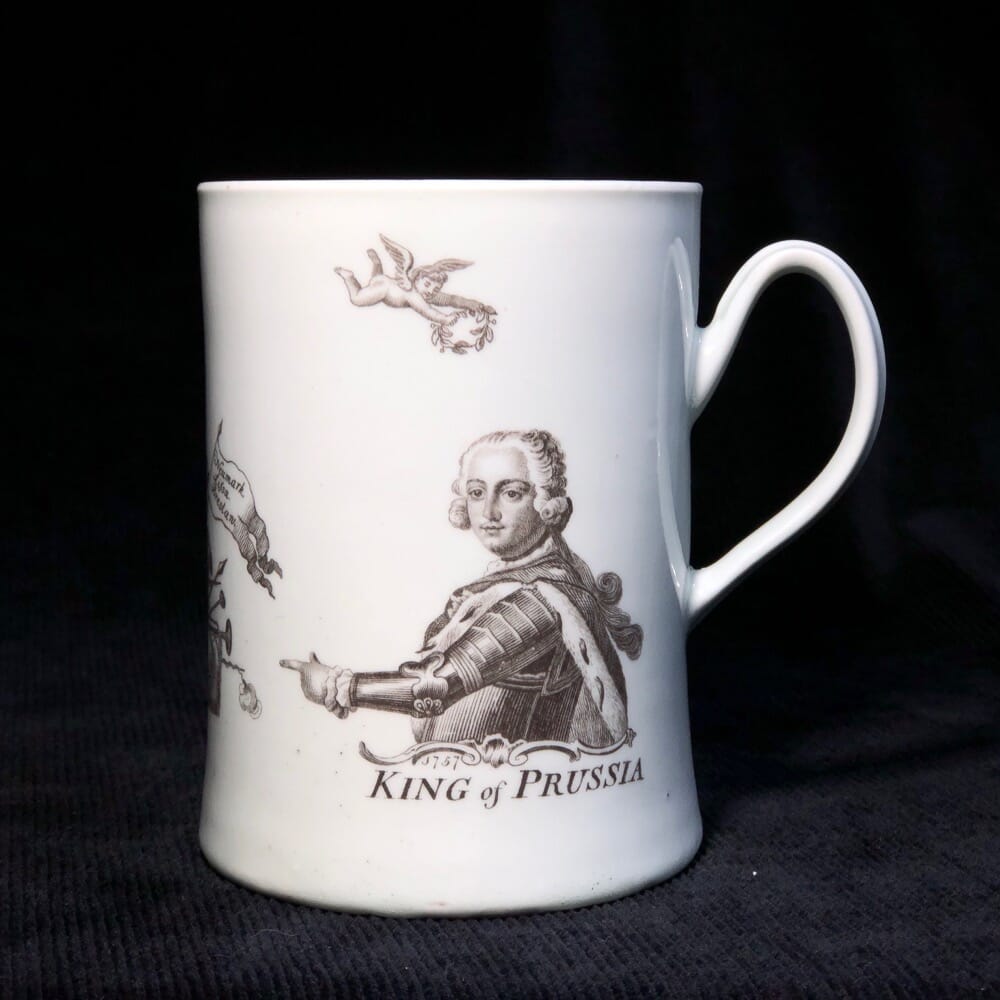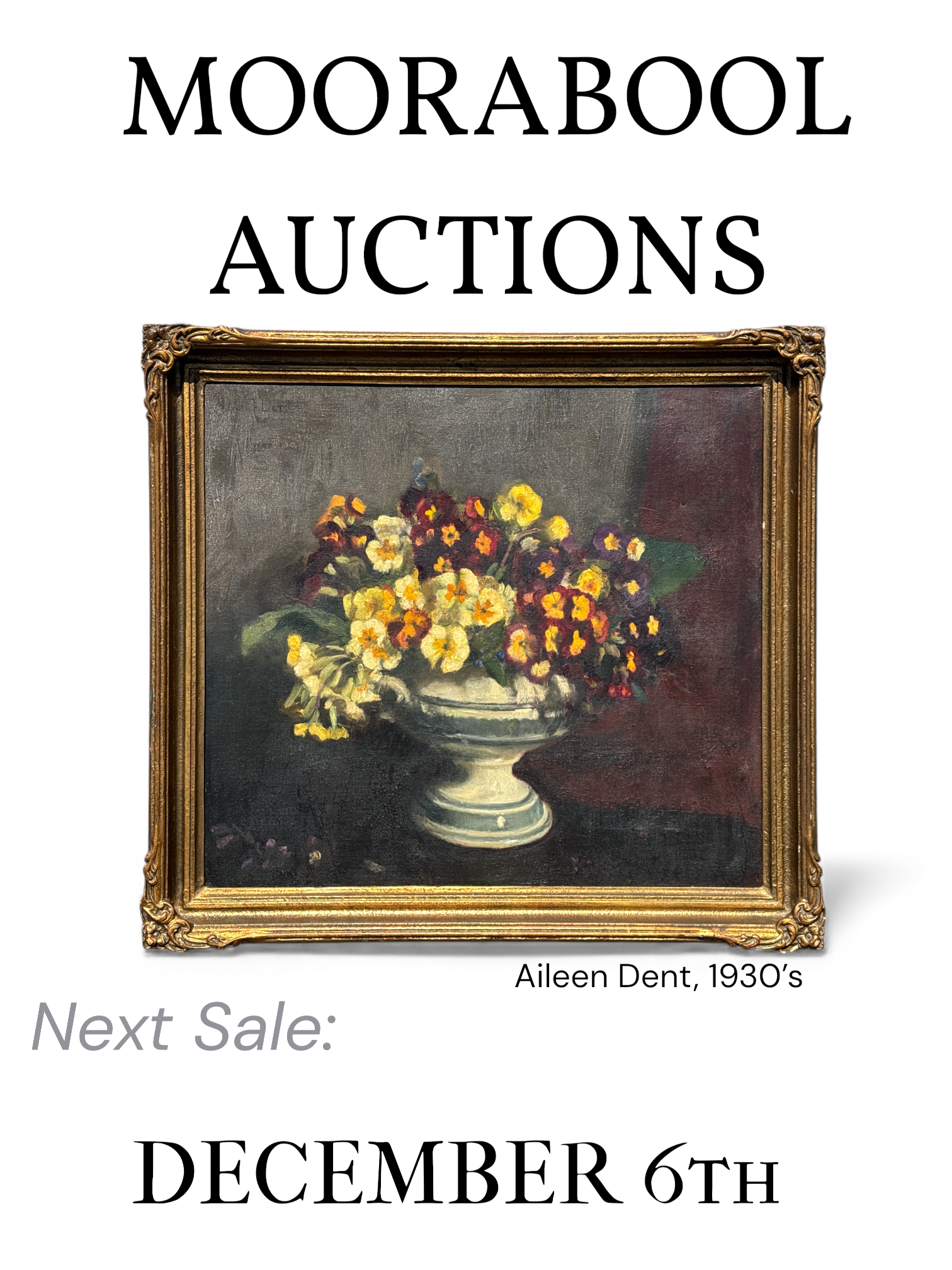Rare Brannam of Barnstaple pottery beaker, F.Braddon ‘Celtic’ slipwork & amusing verse, dated 1903
$460.00 AUD
Interesting English Art Pottery beaker, by Brannam of Barnstaple, the straight sides in green over a red body, decorated with two bands of pale clay raised slip trails skillfully arranged into ‘Celtic’ knotwork, framing an amusing verse neatly incised sgrafitto style:
” Be aisy
If ye cant be aisy
Be as aisy as ye can”
Hand signed to the base:
Brannam / Barnstaple / 1903
also initialed ‘FB’ for the potter, Frederick Braddon,
with ‘Rd. 44671’
Dated 1903
10cm high, 8.5cm wide
Good condition, some minor wear to slipwork, crazing evident
This is a most unusual example of C.H. Brannam’s art pottery, produced in Barnstaple, Devon, from the 1880’s. In 1885, Queen Victoria purchased his wares, giving his business a terrific bit of publicity. Products were extremely varied in style, but centered on true Arts & Crafts principals, looking backwards for techniques and designs – yet giving them a definite ‘modern’ feel for the time.
This beaker has looked to medieval pottery of Devon for the technique of ‘sgraffito’, where the red body of clay is covered in a ‘slip’ of another colour in order to reveal the red body – in this case the amusing caloquial verse incised through green slip. The rarely seen ‘Celtic’ style knotwork is another medieval tradition, ‘Slipware’. This involves a quite runny mixture of clay slip being carefully released in a long trail – traditionally using a cows’ horn with the end cut to form a funnel – and to further highlight the pale clay, sections of the green have been scraped to accommodate the scrolling forms. This has been borrowed from British Celtic art, best seen on the surviving ‘market crosses’ and tombstones of the early 1st millennium AD. Combined as it is here, it echoes the organic forms of the Art Nouveau movement, popular at the date of this piece, 1903. The ‘Celtic Knot’ is of course one endless line, and the presentation here (although not actually endless!) is unusual, and quite satisfying when you consider the Art Nouveau style’s main inspiration was from natural organic forms: the slipware trail looks like something that has grown. Most of the Brannam pieces from this period are more conventional Art Nouveau forms.
It’s hardly surprising that Liberties of London was a main retailer for the firm.
It is noted that while the business survived into the 1970’s, and into the early 2000’s in a debased form, after the departure of Frederick Braddon, pottery of this piece, they no longer produced artistic ‘Art Pottery’, concentrating instead on useful wares.
| Condition | |
|---|---|
| Size | |
| References |
In stock










